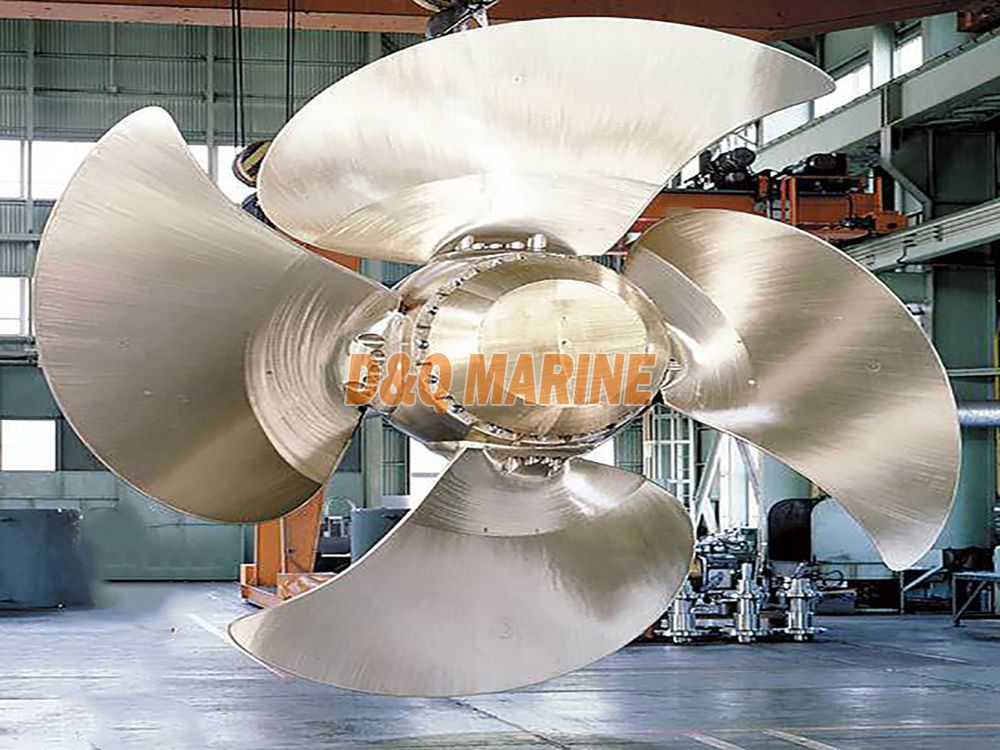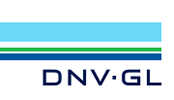Marine Controllable Pitch Propeller:
Marine Controllable Pitch Propellers
A fixed pitch propeller is designed for one operating condition (speed and rotation rate). Controllable-pitch propellers are used when the propeller has to be used in more than one operating condition. These type of propellers can easily be recognized from outside by the bolts that put the propeller blades in place.
Mechanism
This is achieved by changing the pitch of the propeller, usually done by hydraulic means. This can be done by two means: both pull-push rod system and hub piston system. The hub of a Controllable Pitch Propeller (CPP) is very complicated and expensive.
The hub diameter is also larger than that of a fixed pitch propeller, which reduces the efficiency. Typically the CPP hub has a diameter in the range of 0.24D to 0.32D (may even be as high as 0.4 or 0.5D in some application) in comparison to fixed pitch propeller diameter range of 0.16D to 0.25D.
Also the pressure on the blade root is reduced and this is a disadvantage for cavitation at the blade root.
CPPs are frequently used when the rotation rate of the shaft has to be constant due to the use of shaft generator. Variation of the ship speed is then obtained by pitch variations instead of variations of the rotation rate.
To change the pitch a torque is necessary. To make CPP fail safe it is necessary to make the blade spindle torque such that the pitch increases to its maximum when the oil pressure in the hub fails. It is also important to limit the torque required to change the pitch.
Advantages
Fast stop manoeuvres are possible.
The main engine does not need to be reversible.
Fine control of thrust can be achieved without the need to accelerate or decelerate the propulsion machinery.
These propellers allow the main generator to be driven from the main engine which is efficient and cheap. Thus electricity can be generated with the efficiency of main engine and using the cheaper heavy fuel oil (HFO). Variable ship speeds can be obtained with constant propeller rpm as required by the generator.
Dis-advantages
Fuel consumption is higher. The higher propeller rpm at lower speed is hydro dynamically suboptimal.
It require a thicker hub (0.24-0.32 D). The pitch distribution is suboptimal. The usual almost constant pitch in the radial direction causes negative angles of attach at the outer radii at reduced pitch, thus slowing the ship down. Therefore such propellers usually have higher pitch at the outer radii and lower pitch at the inner radii. The higher pitch at the outer radii necessitates a large propeller clearance.
Higher costs for propeller.
The blades are mounted in either pivot or disc bearings. The pitch-control mechanism is usually controlled by oil pressure, or pneumatically (very rarely). These propellers may have three, four or five blades.
Special designs
Two important type of CPP
Self-pitching propeller
Here the blades are sited on an external crank which is pinned to the hub and they are free to take up any pitch position. The balance of blade loading and spindle torque components determine the actual pitch position in service.
Pinnate design
It has a blade activation mechanism which allows blade to change pitch about mean position by varying angular amounts during one revolution of propeller. This can be called as a hybrid between fixed pitch propeller and controllable pitch propeller.






